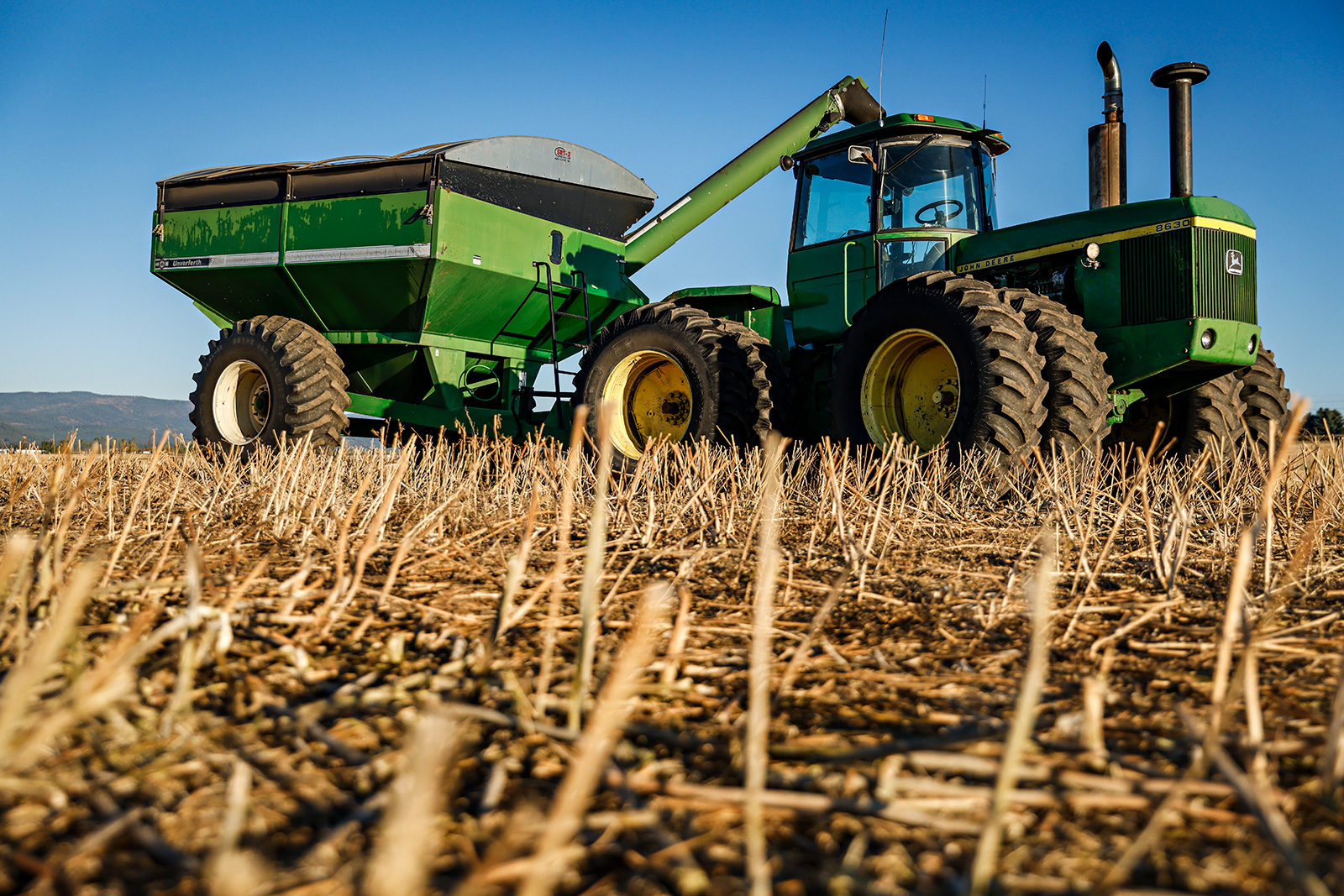Commodity Prices Spike as Fertilizer Supply Dwindles
Fertilizer prices have more than doubled this year as the war in Ukraine halts exports
By Maggie Dresser
In the nearly two decades since Tryg Koch began producing commodity crops like canola and wheat with Heritage Custom Farming in Kalispell, he’s never seen fertilizer prices as high as they have been this year.
Urea nitrogen fertilizer, which he uses for his grass hay and canola crops, costs about $1,100 per ton, which is more than two-and-a-half times than the $430 per ton it cost a year ago.
This year, Koch still planted 500 acres of non-GMO canola, hundreds of acres of wheat, malt barley, lentils and 700 acres of hay; however, he’s had to charge an extra $25 per ton on hay to offset the spike in fertilizer prices.
“Hay prices will be high, there’s no doubt about it,” Koch said. “There will be people who will be forced to sell cattle because they can’t pay these prices.”
Koch is feeling direct impacts from the war in Ukraine since 19% of potash exports used to produce fertilizer hail from Russia while 21% come from Belarus, according to Canadian government data. Both countries have suspended fertilizer exports to the United States.
Forest Johnsen of Westland Seed in Ronan says fertilizer prices have at least doubled and ammonium sulfate fertilizer is in short supply.
“Everybody has had an issue with inventory,” Johnsen said. “It costs too much to store very much. China has had a big effect on the U.S. because of shipping and Russia and Ukraine getting pulled out of the export market puts extra burdens on the U.S. and Canadian production.”
Johnsen says peak fertilizer sales are easing as farmers finish planting for the season, and he hopes production will catch up by the fall. But he says many producers have cut back, adding that high fuel costs are also impacting prices significantly.
At the Northwestern Agricultural Research Center in Kalispell, field crop physiologist and the research center’s superintendent Jessica Torrion is working with commodity crop farmers to help increase their yield using less fertilizer.
Torrion says farmers can still cut off fertilizer input without hurting their yield, but they will sacrifice quality.
Since much of the state experienced a drought last summer, Torrion says less fertilizer was absorbed into the plants, meaning it remained in the soil.
“Plants don’t yield as much as you’d like them to during a drought,” Torrion said. “So the yield is cut in half and the plants don’t utilize the fertilizers during that time. This year, farmers don’t have to follow the same fertilizer recommendations because the plants didn’t utilize them. The strategy is to use what’s left over while the price is increased and play around with the residual fertilizer.”
Since Torrion began at the research center in 2014, she’s focused her work on nitrogen efficiency during droughts and market increase while working to determine economic risk.
“I feel like the more nitrogen you apply, it’s more economically risky,” Torrion said. “The risk when you apply more is so much higher than when you apply less.”
Torrion calls the current fertilizer shortage a learning experience and it might force some producers to step back and examine ways to tighten their input.
For Koch, he’s focusing on crops like lentils, which use less fertilizer and he’s paying close attention to soil health. He’s using AgriGro, which stimulates living microbes that break down fertilizer.
“The crop doesn’t care what the price of fertilizer is,” Koch said. “We are doing things to increase our soil health so that our fertilizer is more efficient.”
As prices spike, Koch says commodity prices are also rising, which helps producers weather the storm with wheat bushels costing twice as much and many commodity prices have increased 30% to 40%.
“It’s a sad thing,” Torrion said. “It’s beyond our control and food is the main commodity and main aspect of living. Producers feed the world and my hope is that future inflation would not be too much for them.”